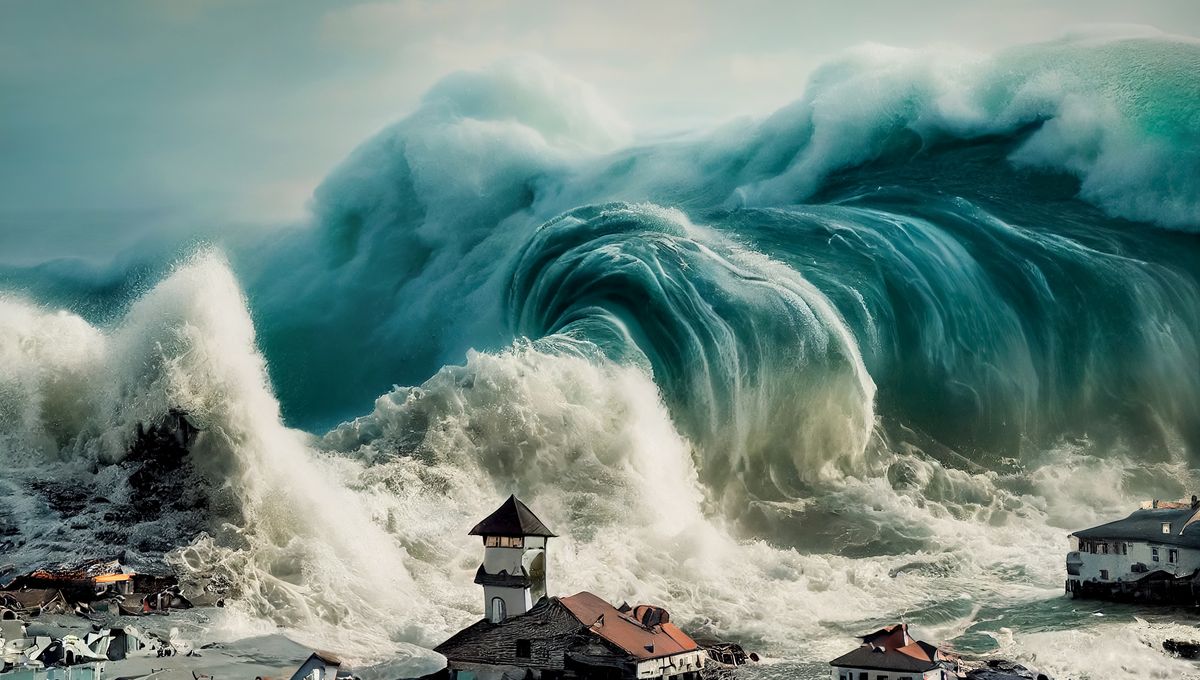Hypothetical questions are always a lot of fun in science because they make us think about what we know in a different light, which can help us better understand the vast size of our planet. So let’s stop the Earth from spinning and see what happens.
First, imagine that the rotation stops in one second. At the equator, it’s like being in a car traveling 1,670 kilometers (1,038 miles) per hour and hitting the brakes. If you’re in a building, you’re thrown into the nearest eastern wall, experiencing 47 times the gravitational acceleration of our planet. The good news is that this might not kill you. But everything else will.
The Earth may be still, but everything will continue to move at the exact same speed as the Earth was before. This includes the atmosphere and all the oceans. The wind alone would be four times faster and stronger than the fastest wind ever recorded (408 km/h 253 mph). And then you will experience a huge tsunami wave, which will destroy everything the wind didn’t destroy (which may not be much).
The extent of the damage will obviously be more devastating the closer you are to the equator, but in the long run, being near the poles won’t save you either. Because of its rotation, the Earth bulges in the middle, so the poles are about 21 kilometers (13 miles) closer to the center of the Earth than the equator. Without the rotation, the oceans would migrate toward the poles—where gravity is strongest—causing devastating earthquakes, one entire megacontinent straddling the equator, and two separate oceans, respectively.
According to Witold Fraczek of the mapping and analysis company Esri, the Northern Ocean will cover most of Europe and Russia. Greenland and all of Canada will be underwater, as will Chicago, Seattle and Boston. New York will still be close to the ocean, but in a different direction. In the Southern Hemisphere, the ocean will cover large parts of Argentina, Chile and New Zealand, as well as the entire Antarctic continent.
So if your supervillain plan is to slow down the Earth’s rotation, the best place to be is at the North Pole on a well-equipped floating mobile base. The location would certainly be an advantage. The Earth would experience a “day” every year, so by going around it would be possible to simulate a regular day/night cycle. But in the long run, things wouldn’t look too rosy. A non-rotating Earth would have no magnetic field, because our planet’s liquid core would also be stationary. Without the magnetic field, the few living things that could have survived such catastrophic changes would eventually succumb to the radiation.
If you had more time, you wouldn’t have to worry about the planet actually slowing down; the Earth is already slowing down on its own. Over the past century, the average day has increased in length by 1.7 milliseconds. The long-term trend is due to tidal effects between the Earth and the moon, but the length of the day fluctuates due to other effects as well. At this rate, it would take 18.5 billion years for the Earth to have a day as long as a year.
An earlier version of this article was published in January 2018.
